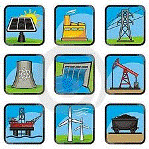Department of Agricultural Economics: Undergraduate Research

Op-Eds from ENSC230 Energy and the Environment: Economics and Policies
Date of this Version
12-2022
Document Type
Article
Citation
Op-Ed from ENSC 230. Energy and the Environment: Economics and Policy, University of Nebraska-Lincoln, Department of Agricultural Economics, Fall 2022.
Abstract
We all know of the worldly issue called global warming. A huge cause of global warming is the emission and buildup of greenhouse gasses in the atmosphere. Carbon dioxide is the leading contributor to global emissions at 74.4% and methane is second at 17.3% (Our World in Data 2019). On August 16, 2022, President Biden signed the Inflation Reduction Act of 2022
which includes a charge that starts in 2024 at $900 per metric ton of methane emitted and will raise to $1500 by 2028 (CRS). This should introduce an incentive for facilities to update their plant, machinery, and equipment to emit less (or no) methane, or pay the fine. I think this is a good idea for the most part.
More CO2 is produced, however methane (CH4) is more dangerous because it is 28 times more potent. This means it is 28 times more efficient at trapping heat in the atmosphere. In 2019, 49.76 billion tons of greenhouse gasses were emitted (Our World in Data). This is up from 32.52 tons in 1990.
Included in
Environmental Indicators and Impact Assessment Commons, Natural Resources and Conservation Commons, Oil, Gas, and Energy Commons, Other Environmental Sciences Commons


Comments
Copyright 2022 Jacob Anderson